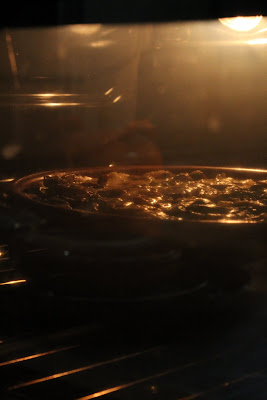And the result was about as can be expected with an experiment: average. Some people loved it, other people hated it and politely pushed it away, and other people kept expecting chocolate with each bite, even after being proven wrong the first few times.

That's the tricky thing about carob- it's not for everyone. According to one guest, it tasted "green". His tastebuds were confused: his eyes promised him something that tasted brown (read: chocolate) and instead reality gave him carob. Which, though it is used as a substitute for chocolate, doesn't really taste the same.
Which is why I think instead of thinking of it as a poor man's chocolate, carob should be considered as its own, delicious ingredient. Many recipes claim that carob can be used as a substitute for chocolate, but it is simply not the same. So this introduction is my disclaimer: don't expect this to taste like chocolate mousse! It's much lighter, does have a bit of an earthy taste, and is incredibly decadent in its own way.
And it's almost vegan! I wanted to make it vegan, but caved in the end and used a bit of cream. But you can easily substitute soy milk or even soy creamer and create a vegan bliss.
And if you have a food processor, it's a very quick and easy fix.

You need:
Carob powder
2-3 avocados
Cream/Soy milk
Dried figs
Cardamom
A bit of sugar
Shredded coconut for decoration
Before getting started, soak the dried figs in water or liquor for an hour or so. It makes them MUCH easier to process.

Cut up your avocados, tear up your now mushy figs, and add them to the carob powder and cardamom. It all goes into the food processor. Process these together, then check for consistency. If it's a bit thick and not smooth, add cream until you get the texture of a mousse. Also check for taste - the figs can make it pretty sweet, but if it needs sugar, throw a bit in.
Process, process. And done!
Put in the refrigerator for a couple hours, top with some coconut, and you're good to go.

If you want to be super decadent, add fresh fruit (I used kiwi, but whatever is in season, mango, berries, cherries, etc. works). It adds some beautiful color and plays perfectly with the carob.















































